
Now that you’ve had the opportunity to get a taste of homeschooling (for pretty much most of the world!) and are seeing the plans for fall in your area, perhaps you’ve decided to try homeschooling this year. If so, you’re not alone. Perhaps two days at school and three days a week of remote distance learning through the school doesn’t appeal to you, you have no idea how your small child is going to do swearing a mask and sitting at a desk all day, you are concerned that schools will close as cases of the virus appear in schools (as several already did in Israel), or you’d like to keep your chances of your family catching the virus as low as possible. No matter what your reasons are for what wanting to homeschool, there are a few things you’ll need to figure out in the next few weeks before school starts, wherever you are in the world.

Find out the legal rules to homeschool in your country.
Not all countries currently permit parents to homeschool. If you live in Sweden or Germany, you’re going to have to have to send your children to school in the fall. In many countries, you can homeschool legally, but you’ll need to know and follow the laws. If you’re in the U.S., you can definitely homeschool, but the laws are different in each state. Wherever you are in the world, if you want to homeschool for this next school year, you’ll need to do a little research.
I live in Nevada in the U.S., which is a low-regulation state (there are low, medium, and high-regulation states, and rules vary further by state; a few states do not require any notice). Each state has different school ages; in Nevada, a child must be enrolled between the ages of 7 and 18. This means that if you don’t want to send your child to kindergarten and instead want to teach him at home, you don’t even need to file any paperwork. If you have enrolled your child for kindergarten last year and your child is 6, however, you’re going to need to file this year because they are already in the school system. Filing keeps your child from being considered truant, so make sure you get this taken care of. Be aware that the legal age in some states is age 5, so make sure to find out what the law is in your state. (Do note that the school district is required to follow the state law, and they cannot legally ask you for more than the state law requires.)
Filing in Nevada means filing a Notice of Intent to homeschool as well as a list of what subjects you will be teaching and what you will be using to teach those subjects. It gets mailed to your local school district to their homeschool office (not just the regular office, so check where you live if there is a specific place) and you should mail it Certified Mail/Return Receipt Requested (you’ll have to go to the post office to do this) so that you get a receipt that they received it. They’ll then mail you a specific receipt from the homeschool office. If someone were to report your child truant, this is your proof that they are not truant should an officer come knocking on your door.
The list is easy. Nevada has certain required subjects (math, English, social studies, and science) and you just put what books/websites you are using under each subject. You only have to do this once, unless you move, or if you send your child back to school and then pull them back out to homeschool again. So if your child is turning 7 and you send in your second grade list, and you never move until your child is 18, you’re done.
If you live in a higher regulation state, you may be required to sign up under an umbrella school, take state tests, which you’ll need to buy (about $25 each; you can order them online), or more. I recommend checking out the Homeschool Legal Defense Association to find out the laws in your state. You should also be able to find a notice of intent from your state’s website.
Choose your curriculum
All the parents who have asked me about curriculum recently first ask me how much it’s going to cost. They’ve heard from people who buy $600-a-year-boxed curriculums and they are scared it’s going to cost more than public school.
I’m a frugal person, if you didn’t know that by now! There is no way I would want to pay $600 a year per child for school, especially when I have nine children.
It’s probably going to cost you a bit to homeschool, but you’re also not going to be buying a list of classroom supplies (which I imagine will include more hand sanitizer and wipes than ever before this year!), a lunchbox, a backpack, possibly folders or uniforms, nor will you need to spend money on school lunches, special treats for breakfasts and lunches that you needed for convenience in packing lunches and getting breakfast quickly, special fees for classes, participation costs for certain electives, or weekly school fundraisers. You also won’t be spending money on gas to drive your children to and from school, and your children won’t be wearing out their shoes as quickly. In short, it’s almost definitely going to cost you less (a lot less) to purchase curriculum than what you were spending to send your children to school.
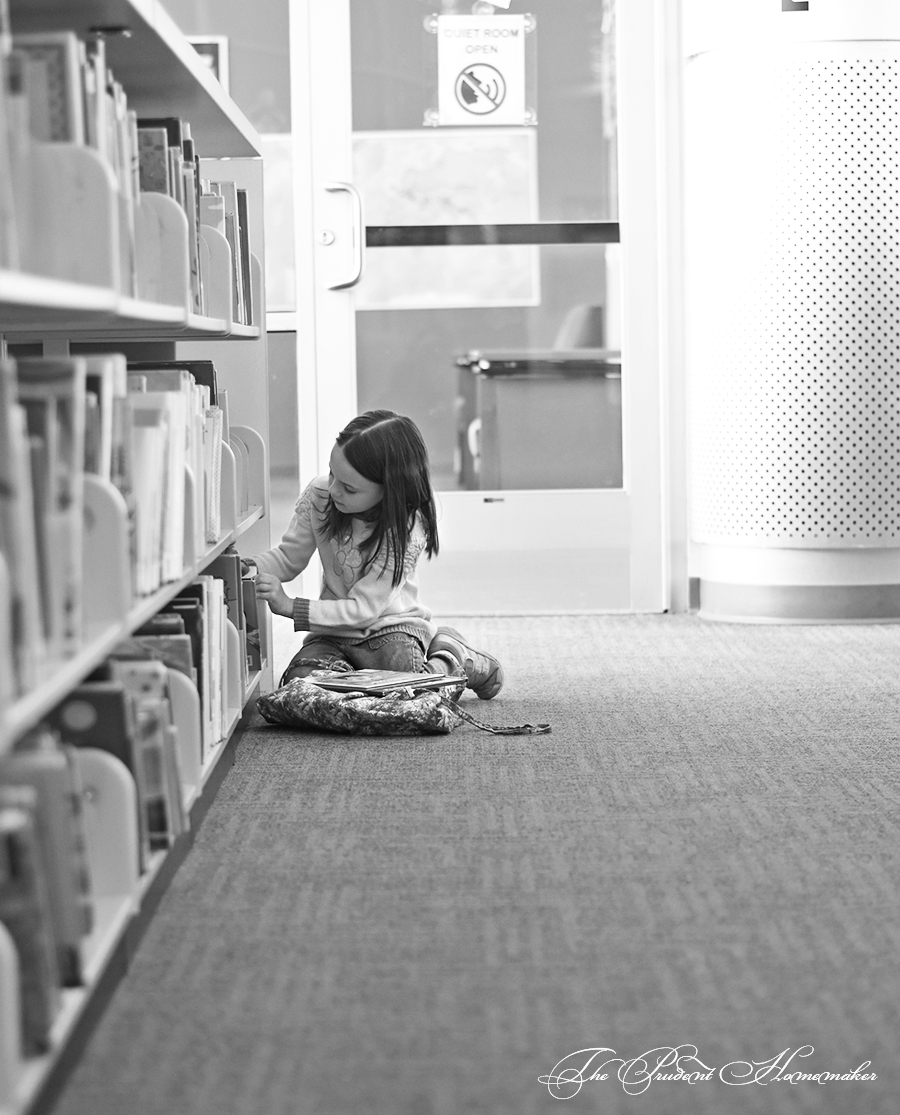
There are lots of free resources you can use. Your local library not only has books you can read (including e-books) and may be open to book requests at this time as well (via curbside pickup or even letting you come in), so you can check out books on history, art, science, literature, and more. In addition, many libraries offer access to online homeschool programs and language programs that are rather costly. Instead of buying Rosetta Stone, for example, (an expensive language learning program) you can sign up through your library card and work on it online for free. My library also has Muzzy and The Great Courses, among other options.
K12Reader has printable worksheets for spelling, reading skills, grammar, writing, and penmanship (including beginning penmanship and cursive).
Khan Academy has free online math classes, including for high school.
EducationPlace has free math worksheets for grades K-6. Click on “Leveled Practice”. This is pretty much a free math book for each grade.
SteveSpanglerScience has science experiments that you can do at home.
YouTube is a great resource, especially for science, art, and foreign languages. We’ve also used it to find explanations on how to do certain math problems. Free School is a fun channel on several subjects, and there are many more!
Check out my post here on free language learning resources for studying French.
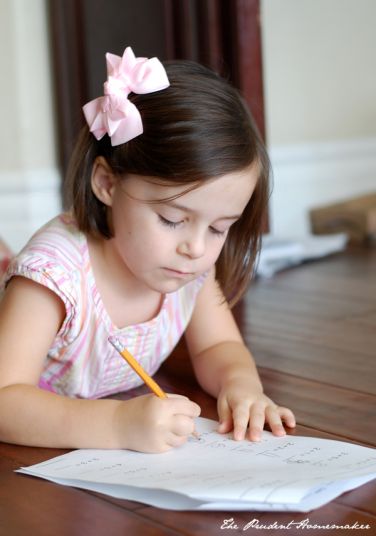
The Math Worksheet Site has a fantastic free section that you can use. They also have a paid subscription (which I use for grades K-3; you can even do a free trial for a week of the paid part and print all that you want).
Education.com allows you to print 10 free worksheets per month. If you print them to a pdf instead of a printer, you can save them to use for the next child as well and then print them out as needed. I especially like their geography worksheets for elementary school.
Typing.com is a free site to teach your children to type correctly and quickly.
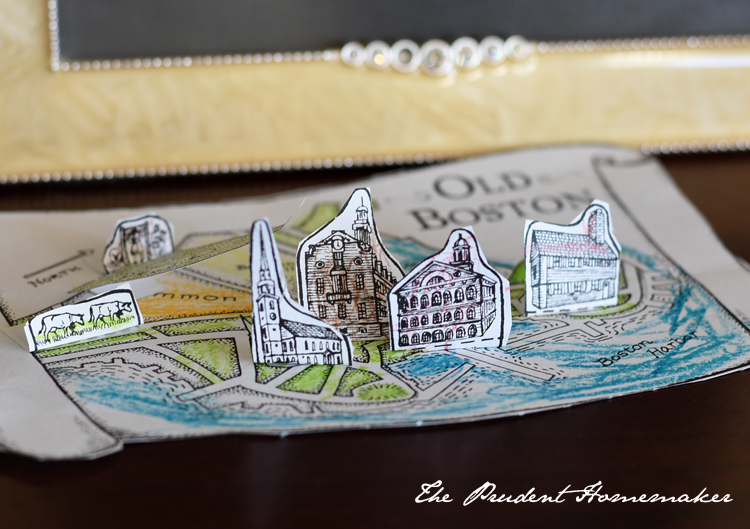
Let’s talk saving money on purchases. I know my readers are from all parts of the world, but as I’m in the U.S., I will share my sources for the U.S.
You can join a homeschool forum online and purchase books used.
You can purchase an older edition and get a discount (some companies offer this).
You can purchase books on sale and use free shipping codes. Christian Book has a whole homeschool section (they even send out a huge catalog just for that) that has sales and free shipping codes. They sell plenty of secular texts as well, so don’t think it’s only religious schooling if that’s not your thing! I even noticed in their latest catalog that they are selling Memoria Press books at a discount this year; I’ve usually purchased directly from Memoria Press for some of my books, so that’s another discount as well.
You don’t have to buy a “boxed” curriculum. That’s just having someone else choose everything for you, and it’s always more expensive, with everything at full price. Instead, you can choose what you want to use for each subject. I highly recommend The Well Trained Mind: A Guide to a Classical Education at Home as a resource for choosing the best, most thorough curriculum. I’ve used it as a starting place for information on ordering books. You can also see what I use for each grade (Kindergarten through Tenth Grade) here. After tenth grade, I have my children take the GED and start taking online college classes, and then transfer those credits to their university of choice. My eldest is now 18 and will be a junior at her university this fall; my second child is 16 (almost 17) and already has a year of online classes done; he’s attending university in person (as much as they will have in-person classes possible) as well as online this fall and is taking online college classes this summer.
Don’t worry if you need a refresher on a subject or don’t know how to do something. Believe in yourself. You’ve got this. You were your child’s first teacher, and you’re always teaching your child in everything you do. Don’t worry if you don’t know the answers to every problem–that’s what teachers’ manuals are for!

Decide where you’ll have school.
I have found that the most effective place for everyone to get their schoolwork done is at the kitchen table where I can walk around the table and help anyone who needs help. If they’re going to be reading a book, like science, history, or something I’ve assigned for literature, I don’t mind if they read in the living room or the library.
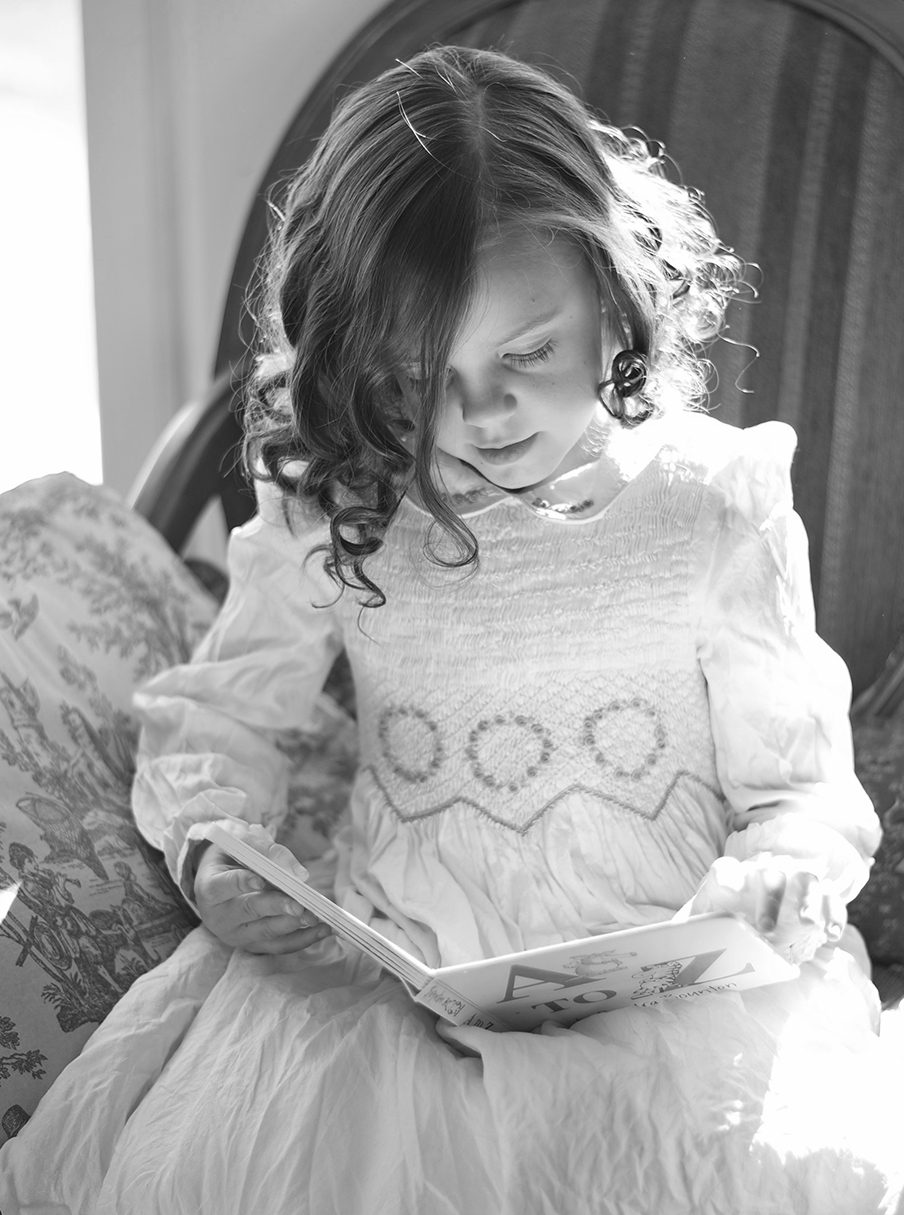
That brings us to the next decision:
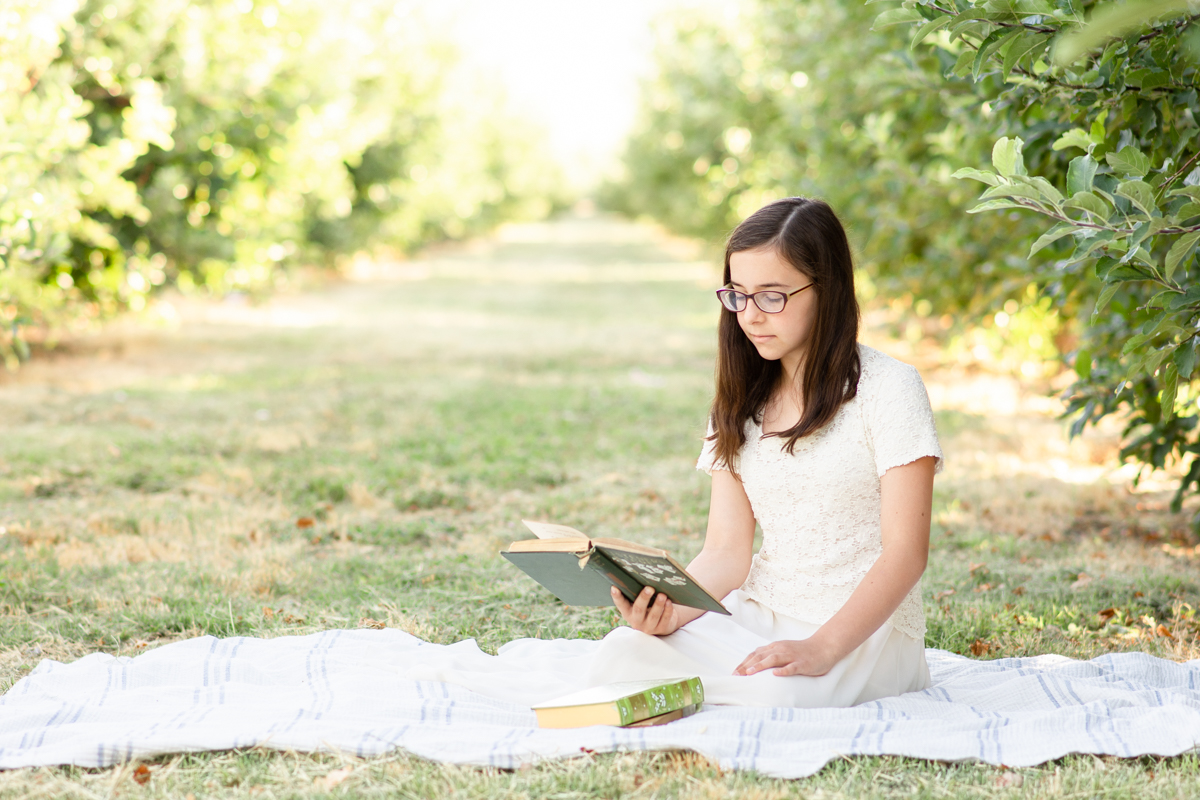
Decide when you’ll have school.
One of the blessings of homeschooling is getting to choose what time you have school. If you want to start later than the public school, you can do that and sleep in. If you want to start early and get it done in the mornings and have the afternoons free to work online, you can do that too (this is what I do).
If you’ve got little ones who nap during the afternoon, you may want to assign your literature reading during this time. If you have a child who is just 3, 4, or 5, and you have babies and toddlers, you may want to have school with the older child in the afternoon while the little ones are napping. (Yes, you can get math, reading, art, history, music, and science done with a kindergartener in just two hours a day!)
I have a schedule, but it is not time-specific per subject at this point (though we usually start with math). We have chores six times a day, before and after each meal, so someone sets the table, wipes the table, sweeps the floor, washes dishes, and we tidy up toys from the little ones before each meal, because when your children are home all day, there is just going to be more mess. You can see some of our past chore assignments here.
I aim to start school by 8 a.m. If we’re a little behind that’s okay; no one is going to be marked tardy!
At 11 a.m. we break for before lunch chores; I cook while they put away their books, someone sets the table, they help the toddlers pick up toys, someone dusts, and a couple of children clean the bathrooms (just a quick clean of the sink, mirrors, counter, and toilet). It takes 5-10 minutes for chores for everyone.
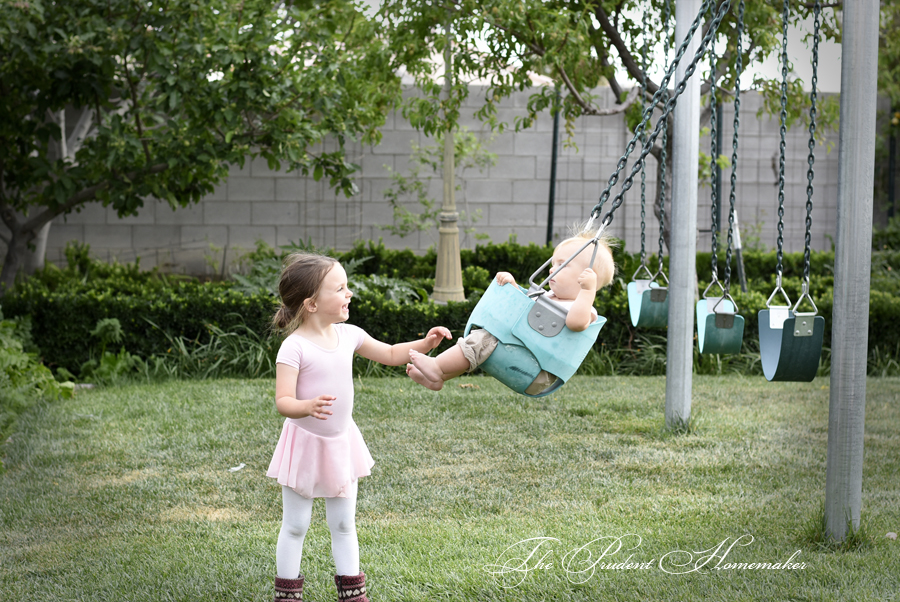
We have lunch and then after lunch chores, and then we’re back to school until around 1:15–or earlier, depending on the age of the child and how much they want to work or daydream that day during school time. In the cooler months, if everyone finishes by noon, we like to go out and play outside during this time.
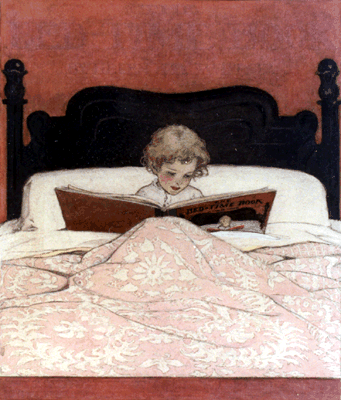
At 1:30, it’s quiet time. For many years, this has been naptime for my little ones. I send everyone to their rooms, where they can read their assigned books if they haven’t already for the day, take a nap (your teenagers may greatly appreciate this opportunity!), or play Lego, cars, dolls, blocks, etc. quietly in their rooms until 3:30.
This quiet time is essential to me (it’s good to have a little quiet in the middle of the day!) as well as a chance to work; I edit photos for my photography business, work on this blog, balance my checkbook, bake bread, sew Christmas presents, etc. In the cooler months, I also use this time to work in my garden, as gardening is a year-round activity here.
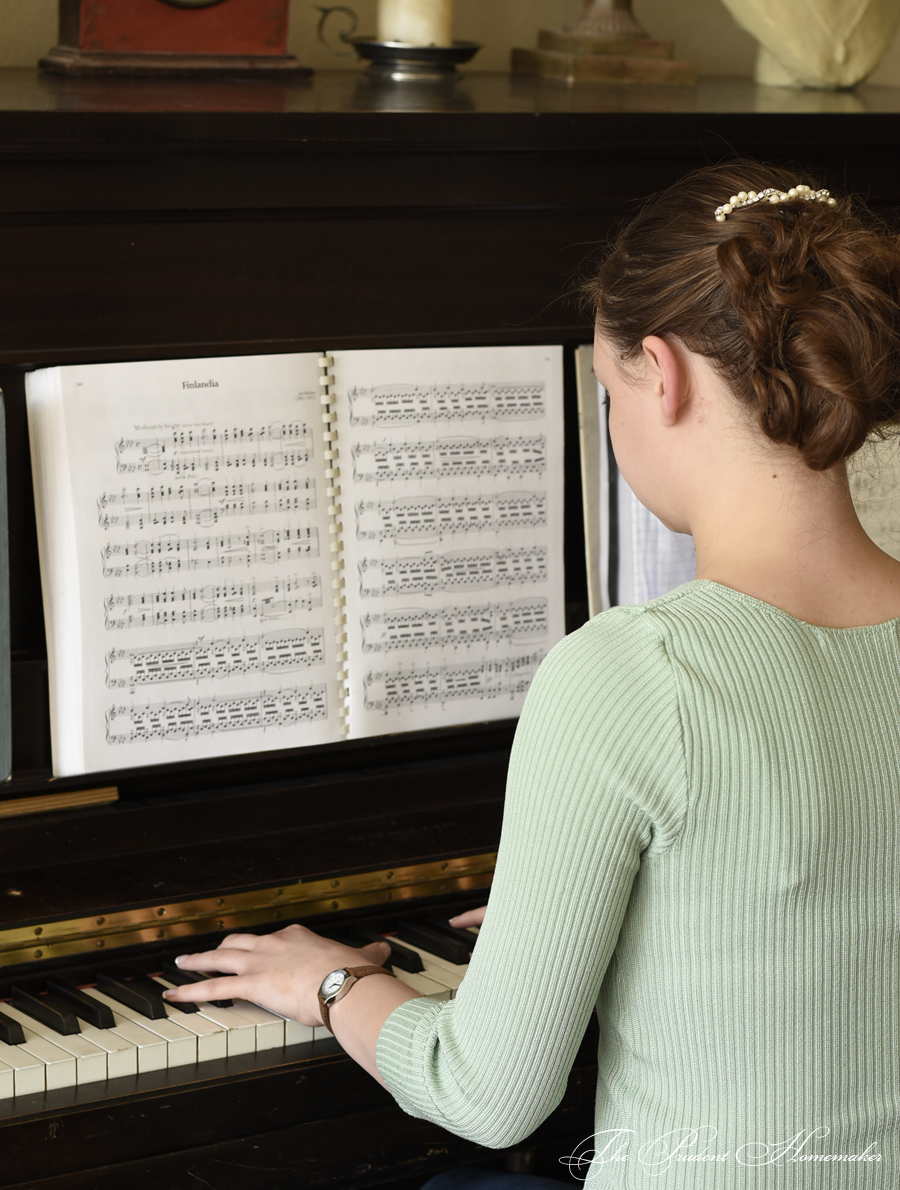
Come 3:30, we have a snack, go outside to play, practice the piano, play games, dance, or watch tv.
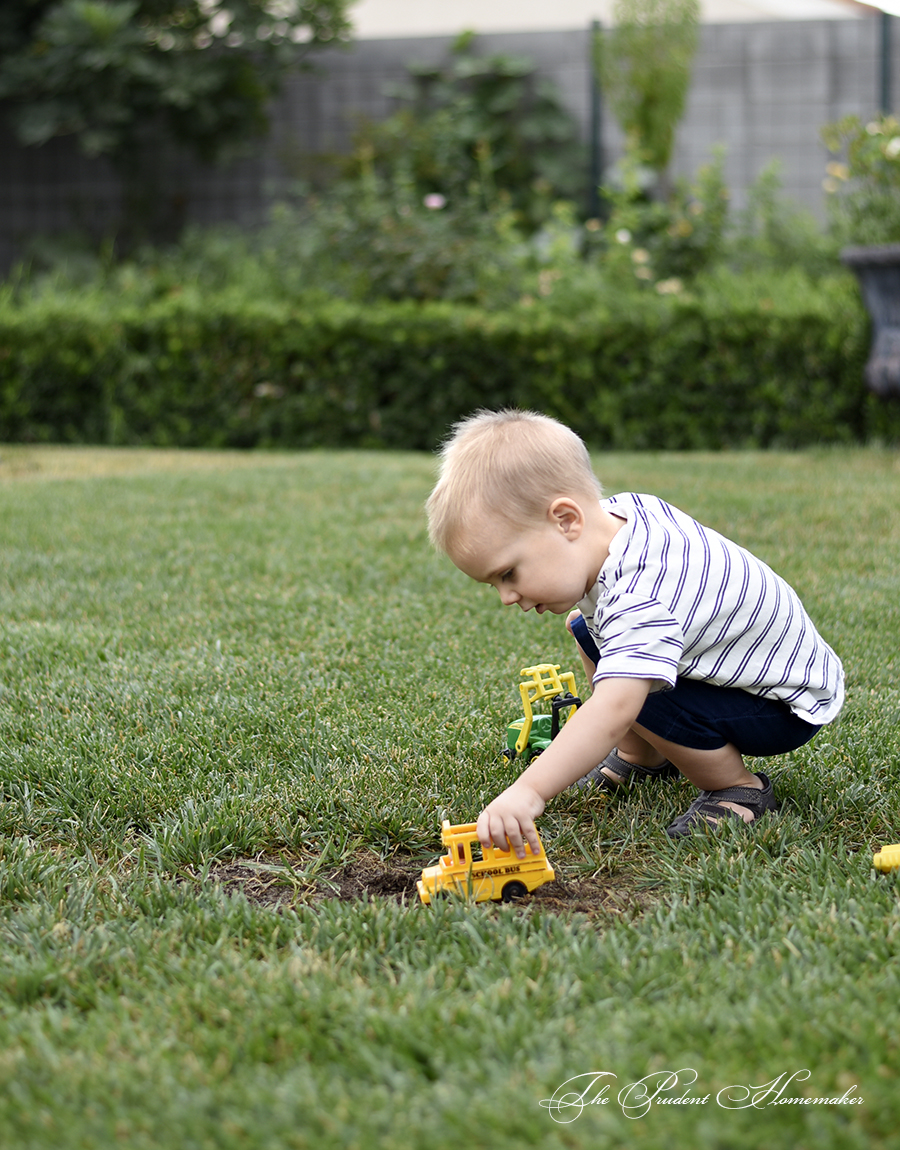
One of the joys in homeschooling is that your afternoons and evenings are free. Schoolwork is done, and you can spend family time together, not helping with homework (you’ve already finished your schoolwork in the morning), but having meals together, playing games together, watching a movie, going on a family walk, teaching your child how to cook, working on a project together, etc. This is your time, and I love the peacefulness of that.
Here are some products I have found particularly helpful in homeschooling my children:
As an Amazon affiliate, I earn from qualifying purchases made through my links. This means that I earn a small percentage from ANY items you place in your cart and purchase within 24 hours after going to Amazon from one of my links (i.e., it doesn’t have to be an item I have linked here).
If you’re going to be making a purchase from Amazon this week, I thank you for using my links to support this site!






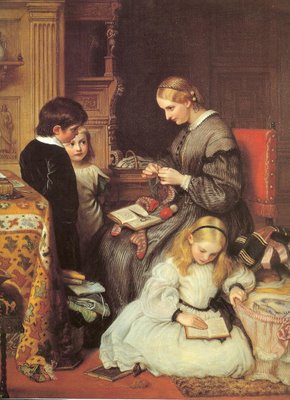
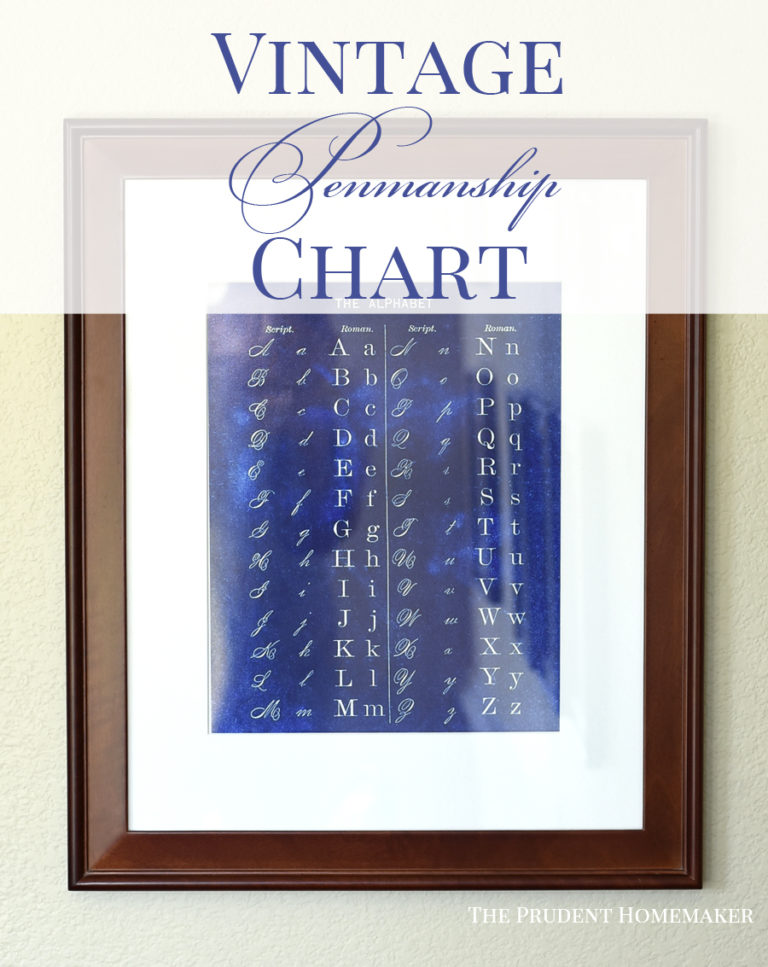
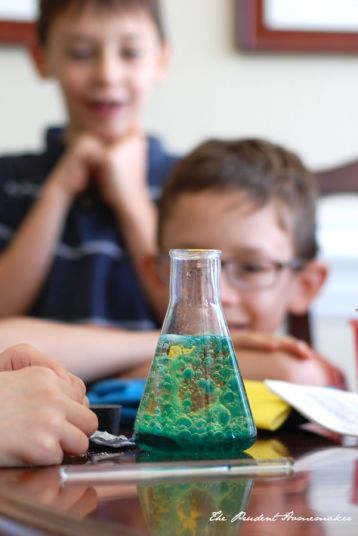
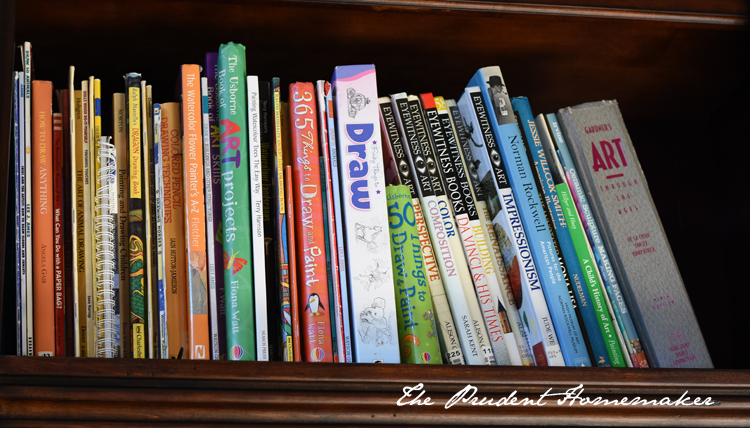
What a terrific, helpful post! So much good information! I homeschooled our four children through grade school (I’m a grandma now; it’s been a while!), and it was as wonderful as it was challenging. I would have loved to have this information in hand back then! You have so much to share, Brandy, and I admire you so much!
Fantastic post!! Homeschooling was such a huge blessing to our family. We took an “unschooling” approach for many subjects (something to look into if you are overwhelmed by the idea of a classroom setting at home). Although, we lived in a state that required a yearly evaluation, we were able to find an evaluator that understood and saw the value in allowing each child to explore what might interest them. It was a lot of work, but well worth the out come! To all those contemplating homeschooling, it can look like whatever you want it to be, even in states that require more oversight. Jokingly, our homeschool motto was, “Everything is school!” As an aside: All of our children were accepted to and attended the college of their choice. My only regret is that we didn’t start homeschooling/unschooling earlier!
What a wonderful and timely post! Thank you for sharing all of these resources Brandy! I’d like to mention another free resource we will try this year. The Good and The Beautiful offers the first 5 levels of Language Arts, a Marine Biology unit and an excellent book list for free as pdf downloads that may be printed. The Language Arts cover phonics, art, grammar, reading and they have gorgeous illustrations. Just another resource that’s free and available!
I am already homeschooling, but love seeing new ideas and resources!
I’m curious about your quiet time. Do your children share rooms? How does that work if a little needs a nap and an older child is in there playing?
Yes, they do share rooms, and they can play quietly if the other is napping. My eldest also (as a teen) found she could take naps while her sisters played Lego! When I had lots of littles they all napped and the eldest would read. We change up who is in each room every few years so it works out well for everyone.
We’ve homeschooled for years, and I’m a homeschool graduate myself. I love reading posts like these!
Here in Kansas we only had to register one time. In fact, I registered my “private school”, not my children.
Over the years we’ve found a balance of curriculum that works for us. We usually spend about $600 a year for ALL our children, plus any supplies needed. I know it will differ for every family; I just like reading what others do. ?
Our favorite places to find our resources are Christian Book, eBay, and ThriftBooks. (This includes any Fiction books we
want to read that go along with our subjects too.)
Our library is too iffy, and we don’t have WiFi. Otherwise I think we would come out less.
We have a table in our basement, and we prefer to start school by 8. Usually we’re done by 11:30, but my high schooler sometimes needs to go back after lunch.
Kansas has quite a few specific credit requirements we have to follow. As per our family rules we usually get testing every year, and we don’t allow them to graduate early.
The one good thing about homeschooling is tailoring to your family. ?
Thanks for the helpful information, Brandy!
Enjoy the school year whatever you decide to do.
Thank you for sharing what works for your family!
Early graduation is the initial reason we chose to homeschool, so for our family, it’s an important goal. We ended up achieving it in a different way than we initially planned, but so far it is working well for our family!
I really do like that homeschooling gives each family a chance to tailor what works for them and each child!
Brandy,
My children are grown adults now but I was still super excited to see this post. You put together an excellent resource for parents that is needed now more than ever. Thank you for all your work on this post and thank you for getting it out there in July so it allows parents the time to make vital decisions for the upcoming school year. I think the more options parents have the better.
Even though I sent my children to public school, I followed up with lots of home school and also found I had to be an advocate for them in the public school system. My children both finished high school with 1 year of college credits using what my state calls the running start program which allows high-schoolers to attend college classes.
Frankly, I think this virus situation has been a big wake up call for parents. Parents in my own opinion, need to be very vigilantly involved in their children’s education. Each child will require something a little different to be successful and the parent must learn what that is and encourage it in school and at home. Music was the answer for one of my children so she took band at school and piano lessons outside of school. Science was the interest for another and that meant joining a science olympiad team in our area which is a competitive science related event between schools. This is outside of the normal school day.
I also think if public school is going to be used that parents should be very aware of what their children are being taught- ask to view the materials. You may be very surprised to learn what is being discussed even at the kindergarten level. Once you are aware you have the option to opt out of areas you would prefer to teach at home.
It is my hope that this current situation will provide the chance for great improvement in the education of all of our children.
I’ve hear of families not writing in workbooks, rather using a piece of scratch paper to write thier answers. It allows multiple students to use the same workbook. Do you do anything so multiple kids can use the same resources?
You can scan a workbook and then print it for your children to reuse if you like. I only use a few workbooks, and in the beginning, I did scan some of them, but with more children, I found it a better use of my time to purchase the workbooks for certain subjects. Most of the books I use are hardcover books and you can write your answers in a spiral-bound notebook, which you can purchase on back to school sales. You could also just buy one workbook and have the child write down their answers in a spiral-bound book. I prefer that rather than scrap paper; you can keep all their work together that way.
I’ve also bought some e-books that you can print for the children to fill out (Scholastic makes workbooks like this on their teacher resource page) and I use a lot of websites where you can print pages. Print on a laser printer with a high-yield cartridge and look for deals on printer paper on back to school sales!
Our two older boys graduated from our home school in 2006. Both were advanced readers, and when they were 14, we began to study early college level textbooks in history so they could take CLEP tests (College Level Entrance Program). They obtained one full college semester in this way and got a lot of the initial core requirements all colleges require out of the way. One of my sons completed his associate’s degree in 1 and a 1/2 years rather than 2. Now our last student is almost 15, and we have changed things up a little – made adjustments based on temperament and interests which is the hallmark of The best reason for home schooling – and we follow a different method. We do a combination of standard, replaced, and online schooling. Currently my remaining student is doing an online interactive class with Classical Academic Press through Schole Academy, and he will do a year long Spanish class with them in the fall with plans for a full year Logic class the following year. These cost money, of course, but if you have one student and can afford the classes nW and then, the interactive arrangement allows your chLed to experience a class in which other like-mIndeed, like-educated students can discuss perspectives with them and have an experience with a different teacher. Roman Roads Media is another source for classical learning, and we are doIn DVD’s and old classic books from their series “Old Western History”. Over the years we have used a myriad collection of everything from Abeka to Bob Jones to Logos School to Charlotte Mason to the Great Courses. We have used free online resources, both printed worksheets and You tube videos. We have used both secular and Christian curriculum. The point is, if a parent has some idea of what her older students’ strengths, interests, and talents are, then she can direct them in that way. Younger students can learn phonics and math and science and AMERICAN HISTORY from free sources online or from inexpensive workbooks and regular chapter books. Parents need to think outside the box of public school. What do their children think they want to “do” when they grow up – be a photographer, an electro an, a mechanic, a teacher, a doctor? They won’t get those opportunities in public school. Internet research will find lots of those options for you. Good luck and good wishes future home Schooling parents!
I’ve heard great things about Schole classes! Thank you so much for sharing what has worked for you!
Here in Florida parents have the choice of sending their children to public school, a charter school or home schooling. There is an online free school, K-12, called Florida Virtual, and students can attend from home full of part time. Students are in classes with a teacher and all resources are provided online as part of each class. My sons were required to take at least one class through Florida Virtual to graduate from public high school. Students are able to take advanced classes that most parents are not able to properly teach, such as calculus, physics or computer science.
Hi Susan,
My friends home-schooled their children and didn’t take anything with Florida Virtual. I checked and the home-schooling statutes do not have that as a requirement. It is a requirement for a standard high school diploma. I’m only pointing this out in case the requirement might deter someone.
Thank you Brandy! I homeschool too and our schedule is very similar to yours. I loved your idea about taking the GED after 10th grade. I have a 9th grader this year and will talk to her about that. There are so many wonderful options. Some curriculum that I love is:
All About Spelling
All About Reading
The Story of the World Audio Series and books
The Good and the Beautiful ( more of a fit for my daughter rather than sons)
Reading aloud as a family has been a wonderful addition too.
Susan C Anthony has some wonderful very inexpensive materials for math and handwriting. Her website is her name.
Thanks for all that you share!
A friend of mine in another state loves that Spelling curriculum!
We found that the colleges wanted both their ACT scores as well as their GED scores. No one wanted a transcript, though I had heard before of that being asked of homeschoolers in the past. The GED (or state equivalent; in our state, it’s technically the Hi-SET) was required for their college application. Having college classes gave them a college transcript as well with transfer credits.
Brandy:
Like the other readers have mentioned this is indeed a timely post. Well Done!
I think I already teach my kids these days since the shutdown and it definitely does get me thinking what I am going to have to decide for our kids for the Fall. So is everyone a member of the HSLDA? Is it worth it to be a member and have access to their resources?
I am not a member of HSLDA, but they are a great resource for knowing the laws in your state (with the free section). They used to make their notice of intent free; I noticed that it no longer is. It does tell you what your notice needs to include per state, so you could make your own from that info. You’ll need to find out where to mail it for your district. Apparently, in North Carolina, it can be submitted online, but so many people were doing so recently that their website crashed! A recent poll shows that 60% of families are considering homeschooling in the fall, and if that number is truly a correct sample of the population (I think it was too small of a sample to be certain) then our system of education my change drastically in the U.S. this coming year. I can see more homeschooling groups in the future being formed as well.
We’ve been homeschooling since 2005 and have never joined HSLDA. We’ve lived in three different states during that time and have never had an issue. I’ve found everything I need to legally homeschool freely available on websites run by state homeschooling organizations. The best thing to do, IMO, is to read the law for yourself directly from your state’s website (the entire legal code of most states is freely available online).
I am not American, so I don’t understand why home schooling is so high in the USA. I would have thought there would be many benefits of children attending a school, including – a wide range of education, different opinions and views, learning team work and social skills. Not criticizing, just curious.
Janey,
There are many reasons to choose to homeschool, and parents homeschool for a variety of reasons (myself included). I currently live in the fifth-largest school district in the U.S. The test scores from each of the schools for children are at 60% or lower each year. Our state ranks 49th in the nation for education. Not all schools are equal.
Homeschooling provides a chance for individualized education for a child. For example, I have a son who devours science books. He read everything I had and then asked for more. In his free time, he watches science videos. This is his passion, and homeschooling gives him time to do so. When we sent him to school for a while, he had math homework until midnight every night and all day Saturday and Sunday.
The U.S. is not the only country where people homeschool. I have friends in France and England who homeschool (my friend who homeschools in France is a teacher in a school and his wife, who homeschools their children, is a former school teacher). Many other countries permit homeschooling as well. The U.S. does not have a national school schedule or a national curriculum. Each state has different regulations and within each state there are thousands of school districts, each with their own standards and materials.
Right now, many parents are looking at the reopening of schools and wondering if it is safe to do so. Teachers and parents are divided on the right thing to do. Children need an education and parents need to work, but no one wants to die, either. The current proposal across much of the U.S. is to have students attend school one to two days a week (depending on where; each school district has different plans) and learn remotely via Zoom and other online classes for the other three to four days a week. Many parents feel like if they are already going to have their children home three to four days a week for school, they might as well homeschool their children and pick a curriculum that will work well for them. A lot of parents were not happy with assignments that were given when children were asked to start having school at home in March when we started lockdown.
In addition to the limited days at school, the classes have been changed. Classes that took an entire school year (for example, Algebra) will now be taught in one semester instead of over the entire school year. Learning a whole year’s worth of math in half a year is not going to be an easy task. Classes like music, art, and sports are canceled.
I just read this interesting opinion piece from a teacher on the problems with reopening schools right now that I thought was really well done. She does a good job of addressing the issues that schools have with safely operating. And the question is, even with all the precautions in place, is it even safe to reopen schools at all right now? There is the story of three teachers who taught summer school this summer who shared a classroom, took all the precautions, and yet all of them caught Covid-19 and one died. Teachers are concerned for their well-being as well. Another question is, if they’re teaching four days a week to two groups of children (one on Mondays and Tuesdays and the other on Thursday and Fridays) who will watch their children? Who will be home three days a week, while they’re at work? There are no easy solutions, but for many, right now is a great time to start homeschooling. They may choose to send their children back to school later when schools reopen, but this way, they know that even if a school closes due to an outbreak of Covid-19 at the school, their children will continue to get an education this year.
As a homeschool graduate who is now home educating my own children, this is a thorough article for those interested in getting started. Cheers to you who are considering it! I will throw in my two cents’ worth for resources as well.
Rainbow Resource is great resource for homeschool materials. Their prices may or may not be less than other places, depending on the product, but they offer an incredible array of curricula and educational aids, and they have excellent in-house reviews for nearly every product they sell.
Another completely free curriculum resource for those who may be interested in a Charlotte Mason-style approach is Ambleside Online. The site is admittedly clunky, but there is a wealth of information on it.
The Well Trained Mind has a very good online forum with many people who have experience in homeschooling and are so happy to answer questions about curriculum, scheduling, and so much more. I have found it a wonderful place to ask questions like, “Curriculum recommendations for a 4th grader who loves science”.
I homeschooled for part of each of my children’s school years, and one through high school. Hard, but so good too. If I had school-age kids, I would do it now. I do have the privilege to be able to stay at home, though my husband is a public school teacher and we do sacrifice some things by choosing to live on one teacher’s salary. I have no regrets. I know that some couples do not have that privilege, and my heart goes out to them.
Last I checked, I was only able to print three worksheets per month from Education.com without paying for a subscription. When I joined several years ago, it was 10, then quickly went to seven. For the past six months or so, it has only been three.
Due to Covid, there are many, MANY more educational resources available for free than there used to be. A lot of museums, libraries, zoos and science centers have created special resources. Programs that previously required subscriptions are now free. There are so many free options now that it is overwhelming to sort through even a fraction of them. However, that means if you’re looking for something specific, you’ll probably find it!
My favorite resource is The Met Collection where you can view and download over 400,000 photos or scans of amazing works of art.
Andrea,
Thank you so much for telling us about that change!
I have seen some paid sites become free as well; I think it’s wonderful! I wonder if they will remain free this fall.
Brandy – this is an amazing resource and I intend to tell many friends about it. Home Schooling is not as widespread in Canada as the US but I do know some parents who do it (not terribly well I’m afraid) but I have a feeling that more may be attempting it over the next year or so. Even though some of our rules and regs are different – and differ between provinces – many of the resources you reference will still be relevant.
Thank you so much for doing all this work.
Brandy, do you have the 4th edition of The Well-Trainee Mind? This will be my first year homeschooling, but I do have third edition of The Well-Trained Mind, because I thought it was such an excellent book. I’m just wondering if the updated recommendations and any new additions to the book make the new edition something I should invest in. Unsurprisingly, the fourth edition is checked out at the library with holds, so I can’t compare before school begins
I do not, but I wanted to link to the newest one for those who are starting, because it’s going to have the latest resources. I’m considering getting it myself!
In Alberta families must register with a local school board when homeschooling-they also receive $850 per year per student to help offset the cost of resources. My 2 children attended private school for K-9 and public high school. I think homeschooling is a great option if you have one parent home to teach.
Brandy,
I thank you so much for posting this timely and important information. These are challenging times, and this is so valuable. I am hoping to homeschool my 3 children and want to do it well. I am afraid of failing them, but we did well this spring, and I imagine that on our own, we will be just fine!
I wanted to share a few things that I do as a grandmother with my grandchildren. My grandchildren live in another state so I do it over FaceTime on my computer. I do math facts with them. I like the books by Susan Greenwald. I just completed multiplication with my grandson and we’re going to do the division book next. With our granddaughter, I’m doing the addition book. I purchased a book for myself and my daughter-in-law purchased the books for the children. I did learn accidentally that it’s best to have them just tell you the answers. I let them choose if they want to go across in rows or down in columns. My grandson likes to go as fast as possible. He has his facts very automatic. Our granddaughter wanted to write her answers in her book, but they did not become automatic because she was looking up at her earlier answers. I think that if they have their math facts very automatic that they can focus on learning math concepts and they are much more confident with math (because they aren’t making mathematical errors.)
I also do Miquon math with them with Cuisenaire rods. It is only a 3 year curriculum but it helps them think about math in other ways. My daughter-in-law does Singapore math with them. She feels like the combination helps them–if they don’t understand it with one method then the other method helps.
They actually quite like doing math with me. I hype it up.
I also do cooking with them when we are visiting each other. I have celiac and am also dairy-free. My children and grandchildren also have it. I think it’s so important to know how to cook. I purchased the Kids Cook Real Food curriculum. I bought all of them krinkle cutters to cut veggies and fruits. We’ve had a lot of fun doing it. If I lived closer, I would do it every week with them. They are very proud of their accomplishments
I have a friend who teaches their grandchildren piano over FaceTime. I think she’s written an e-book on how to do that which is on Amazon.
Grandparents can be a great (free) resource to help with this. I love that I can spend that time chatting with them a couple of times each week. Grandparents really want their grandchildren to succeed also.
I wish they lived closer. Every time they come my grandson (who is now 11) and our granddaughter who is 8 love to sew on my machine. I inherited lots of fabric from Mom so whatever they can dream up we can usually do. Pat from Kansas posted a few weeks ago about a children’s sewing curriculum. I’d love to do sewing on a more regular basis.
The Mary Frances Sewing Book is a great resource for teaching a child to sew.
I’m very interested in the penmanship program you use. Beautiful! Do you need both the theory book and the copy books? Or do you find the theory book unnecessary?
They combined them all into one book now, which is really nice–and also less money! I love it! It’s here.
In defense of box curriculums: I did buy a boxed curriculum that was designed to be reused over the years. I’m really glad I did. I have loaned it out and got a different year in return, then swapped again the following year with other families. It has durability. I have seen stair step families make one investment and use it for all of their children on the homeschool group I admin. . I also was happy to see it held it’s value when I eventually went to resell it, it sold quickly. I needed the boxed curriculum for the planning and discipline it provided. Yes $600 is a lot for one child but a $600 box curriculum then used 5 times worked out to be $160 per year per child, with $40 in consumables but then subtract $60 because you sold it for $300 after you were done. Brings it to $100 per year per child. For an open an go curriculum, yes please! Yes I did have the hassle of not letting the kids lose a book but they soon learned not to.
That’s a good way to use it!
A friend of mine just bought the box for each grade every time for each child, because parts of it were consumable (but not all). She ended up gifting me a number of books that she now had multiples of because she was buying them again each time for each child.
Dear Brandy,
Thank you so much for sharing your wisdom, experience, knowledge and encouragement. I bought the book you recommended on teaching your child to read, as she was behind for a kindergartner this past academic year, and it transformed her into a real reader! I will continue to visit this blog post as I venture into virtual learning (using a program called Edgenuity paid for by our school district) and supplementing with my own resources.
Best wishes,
Nadya in Boston
Brandy,
Thank you for this post!! It truly is a wealth of information. I will share it with my daughters as well as on Facebook. I know this will be helpful to many.
Hi Brandy, I’m a NYC mom of 3rd and 4th graders and I’m 99% decided to do homeschooling this year because of the mess of our schools. That 1% that kept me from sending the letter of intent already is my fear that I’m not qualified enough to teach them and I’m working full time. One of the fears is because I’m not a native English speaker and even though I’m a college graduate, I don’t have personal experience of being thought phonics, English literature, history and so on, I’m from Europe and while of course we learned about those, it was not as extensive as Americans learn since it’s their heritage.. I’m doing tons of research everywhere and really want to jump in. One of the questions I have while reviewing all of your resources is the grade reading assignments that you posted. It will sound really bad, but I can’t imagine my 8 & 9 year olds to go through all those books. In the public schools they read a fraction of this, I wish they read more but how do you make them to? The reading lists are really long. Second question is the history. I looked at sample pages from the books you listed, which I know are highly recommended but my questions is – do the kids read all of that and all the chapters? This also seems a ton compared to what they learned in school. And final question, my son who just finished 3rd grade, learned a tiny fraction of what you are listing for history for third grade. Since my daughter is 3rd now and he is 4th, can I just do the third grade curriculum for both of them? Or do I need to go to a 4th grade history topics for him and 3rd for her? Or even some of literature selection? I know writing and math I need to do separately, I dont worry about math and science since that’s my strong side, but if you could recommend some composition / writing curriculum that would be helpful, since not being native, it would be great too. I know you are super busy so if you don’t have time responding, it’s fine if you just post it so maybe some of your readers will have advice… thank you
Hi Joanna!
You can choose what you want your children to do! If you want them both to study the same history program the same year, you can do that! It will make your life easier. If you want them to just read a few books, you can also do that. I want my children to read lots of books, and I don’t think the number of books at school is sufficient to foster a love of reading. You can choose completely different books that work for them!
I was in advanced reading groups as a child. We were given additional reading assignments that were harder than those in the rest of the class, so I read a lot in school myself. I have found that my children have time to read all of the assigned books in the year as well as many more for fun. I don’t have them answer questions on every book nor do I require book reports on each one.
The English grammar books that I use also have composition and writing skills. I like how extensively they cover grammar, which is why I chose them (my degree is in English and I wanted a strong English text). However, you have a lot of options available to you! There are many publishers who make homeschool curriculum. The great thing is that there is also a teacher’s manual for everything, so you have the answers in front of you.
The other thing that I would add is for you to teach them your native language. You’re probably already speaking it to them, but having them learn to read and write in that language would be wonderful. European schools introduce languages much earlier (and with considerably more success!) than American schools.
When my youngest daughter was diagnosed with cancer at age 15, her oncologist was SO relieved to hear that she was homeschooled. It made life so much easier for us, that we didn’t have to fight with the school on keeping up with her work while she was fighting for her life. And after her treatment, she could only focus for about 5 minutes at a time, and needed 1 – 2 naps per day. Because she was homeschooling, we were able to work at her pace, and with her schedule! By the time she was a year out from treatment, she could sit for about an hour at a stretch, and now (2.5 years out), she’s fairly close to normal, but still has some long term physical effects from chemo that we’ve had to accommodate. She’s gearing up for the ACT in Sept, and hopes to start at our local community college soon. It’s helped SO much to be able to adjust to her needs, without having to jump through a whole bunch of extra hoops with the school district!